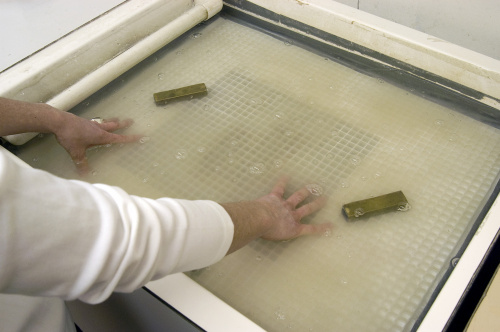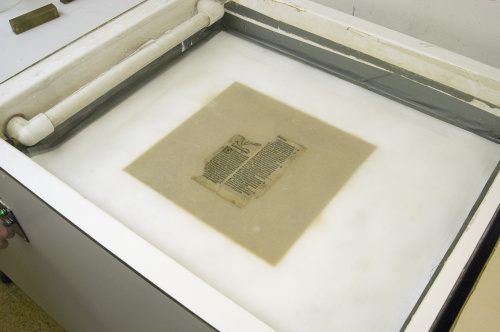Leafcasting
This article describes treatments carried out in the Folger Shakespeare Library Conservation Lab.
In leafcasting, a fine slurry, consisting of beaten paper fibers highly diluted in water, is used to fill holes, tears, and thin spots in a damaged sheet of paper.
Computerized leafcasting was developed at the Folger in the mid-1980s. To begin the process, a video camera captures an image of the page to be treated. Specialized software measures the paper’s surface area and then calculates how much slurry should be added to fill the tears and holes in the page to the same thickness as the original paper.
Computerized Leafcasting for a Polish Herbal
Over the centuries, readers made heavy use of this important early Polish herbal by Stefan Falimierz (245- 087q), which was published in Krakow in 1534. Some pages are missing altogether, and those that survive have thinned in many places and include tears and holes. To repair the damage, Folger conservators first removed old, overly stiff patches from the paper, and then employed a process called leafcasting to fill the areas that had previously been patched.
These photographs show the next steps. First, the conservator places the page on a backing material within the leafcasting apparatus.
Next, a grid is placed over the paper and the leafcasting area is filled with water. The precisely measured slurry is poured in and evenly distributed.
In the final step, the water is drained off, leaving only the paper fibers to fill the missing areas.
Following these steps, the repaired page is sized, dried, and then carefully cut to the correct outer dimensions. After all the pages of the herbal have been repaired, the textblock can be reassembled and rebound, with strengthened pages that will endure for many years to come.


